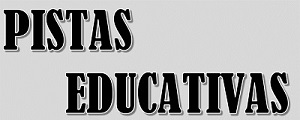ANILLO RESONANTE SEPARADO: MEDICIÓN DE LA RAZÓN SALIDA A ENTRADA USANDO RADIO DEFINIDO POR SOFTWARE EN LA BANDA UHF (SPLIT-RING RESONATOR: MEASUREMENT OF THE OUTPUT-TO-INPUT RATIO USING SOFTWARE-DEFINED RADIO AT UHF FREQUENCIES)
Resumen
Las mediciones de parámetros en radiofrecuencia son importantes en electrónica y telecomunicaciones ya que permiten la correcta caracterización de los dispositivos implicados en este tipo de sistemas. Este trabajo presenta la medición de la razón salida a entrada de potencia de un anillo resonante separado en circuito impreso diseñado y fabricado para operar en la banda UHF. Se llevaron a cabo mediciones considerando tres montajes experimentales, entre los que se incluyó la utilización de radios definidos por software. Medir la razón salida a entrada de un dispositivo en radiofrecuencia mediante instrumentos versátiles permite aprovechar la infraestructura educativa con la que se cuenta en universidades públicas que ofrecen programas educativos de licenciatura en electrónica y telecomunicaciones. Así mismo, el uso de radios definidos por software permite modificar la frecuencia de operación y otras características del sistema de medición.
Palabras Clave: Anillo resonante separado, Radio definido por software, Razón salida a entrada, UHF.
Abstract
Measurements of radiofrequency parameters are important in electronics and telecommunications since they allow the correct characterization of devices involved in this type of systems. This work focuses on the measurement of the output-to-input power ratio of a printed split-ring resonator designed and manufactured to operate at UHF frequencies. Measurements were carried out considering three experimental setups, including the use of software-defined radios. Measuring the output-to-input ratio of a radiofrequency device using versatile instruments allows to take advantage of educational infrastructure which is available in public universities that offer undergraduate educational programs in electronics and telecommunications. Likewise, the use of software-defined radios allows to modify the operating frequency and other characteristics of the measurement system.
Keywords: Output-to-input ratio, Split-ring resonator, Software-defined radio, UHF.
Texto completo:
1061-1075 PDFReferencias
Cheng Z. Communication Electronic Circuits, China Science Publishing & Media Ltd, 2020.
Dehning K. Split-Ring Resonator Based Sensor for the Detection of Amino Acids in Liquids, Sensors, 23(2), 645, 2023.
Donat W. Explore Software Defined Radio: Use SDR to Receive Satellite Images and Space Signals, Pragmatic Programmers LLC, 2021.
Fernandez M. Introducción a SDR con GNU Radio, Marcombo, 2019.
LPKF, https://www.lpkf.com/en/industries-technologies/research-in-house-pcb-prototyping/products/lpkf-protomat-s64, 2024.
Matekovits L. Printed Antennas for 5g Networks, Springer, 2022.
NANOVNA, https://uelectronics.com/producto/nanovna-h4-analizador-de-redes-vectorial-10khz-a-1-5ghz/?srsltid=AfmBOop6iGEHCTXB-x_98109uA4qit7bTfGpHFUvo1NsIcWh1qSek6Dw, 2024.
N200, https://www.ettus.com/all-products/un200-kit/, 2024.
N9310A, https://www.keysight.com/my/en/product/N9310A/n9310a-rf-signal-generator.html, 2024.
Pekçokgüler N. A novel equivalent circuit model for split ring resonator with an application of low phase noise reference oscillator, preprint, Integration the VLSI Journal, 2017.
Rappaport T. Wireless Communications: Principles and Practice, Second Edition, Prentice Hall Communications Engineering and Emerging Technologies Series, 2002.
Reinecke T. Design and evaluation of split-ring resonators for aptamer-based biosensors. Journal of Sensors and Sensor Systems, 2018.
RSA306, https://www.tek.com/en/datasheet/rsa306-usb-real-time-spectrum-analyzer-datasheet-0, 2024.
Tomasi W. Sistemas de Comunicaciones Electrónicas. Cuarta Edición, Pearson Education, 2003.
Tuttlebee W. Software Defined Radio: Enabling Technologies, Wiley, 2002.
URL de la licencia: https://creativecommons.org/licenses/by/3.0/deed.es

 Pistas Educativas está bajo la Licencia Creative Commons Atribución 3.0 No portada.
Pistas Educativas está bajo la Licencia Creative Commons Atribución 3.0 No portada. 
TECNOLÓGICO NACIONAL DE MÉXICO / INSTITUTO TECNOLÓGICO DE CELAYA
Antonio García Cubas Pte #600 esq. Av. Tecnológico, Celaya, Gto. México
Tel. 461 61 17575 Ext 5450 y 5146
pistaseducativas@itcelaya.edu.mx
